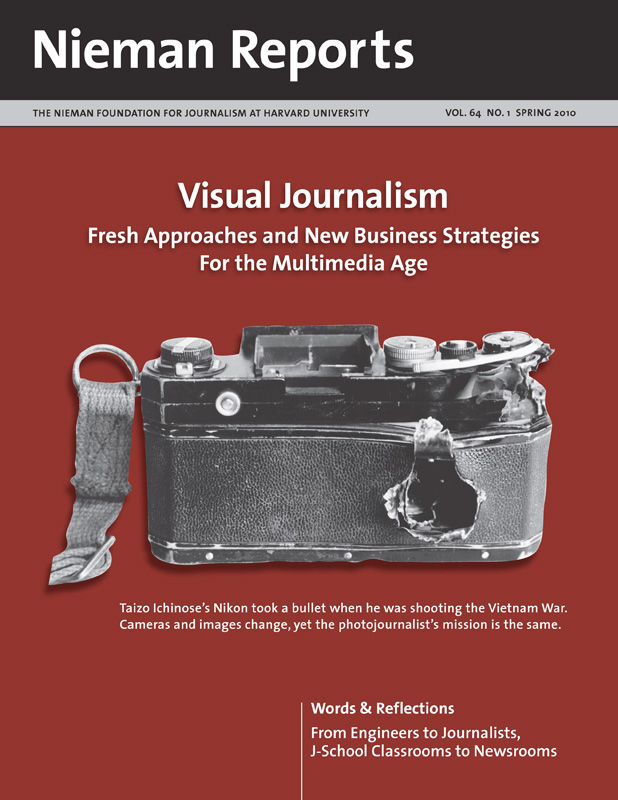In May 2009, Stephen Mayes spoke at the World Press Photo awards ceremony in Amsterdam. He had served as secretary of the jury for the awards from 2004 to 2009, and his observations about photo judging led to much discussion among photojournalists. Here are some excerpts:
RELATED ARTICLE
“What Crisis?”
– Stephen MayesThe overwhelming impression from the vast volume of images is that photojournalism (as a format for interpreting the world) is trying to be relevant by copying itself rather than by observing the world. Nowhere is this more obvious than at World Press Photo where every year the winners stimulate a slew of copyists (in style and content). It’s easy to understand why when we consider that the last 20 years has seen an explosion in the numbers of professional photojournalists and a collapse of the traditional markets. As more photographers compete for less page space, a lot of work ends up in competitions as the only outlet—and as the largest, World Press Photo gets more than its fair share.
Every year, the jury is astonished by the repetition of subjects and the lack of variety in the coverage. From the infinity of human experience the list of subjects covered by the entrants would fill a single page, and (excluding sports as a specialist area) could be reduced even to three lines:
- The dispossessed and the powerless
- The exotic
- Anywhere but home (the American election would be one of the exceptions to this rule).
This is the general view, the blurred impression of 470,214 images and of course there are many exceptions. But meanwhile hospitals and the sick (and especially mental hospitals), the afflicted, the poor, the injured are photographed way in excess of their actual numbers. And I have a feeling that there are as many photographers as drug users in Kabul’s Russian House. As one juror said this year, “Ninety percent of the pictures are about 10 percent of the world.”
Overrepresented: commercial sex, suffering black folk, Muslim women in veils, same sex couples kissing, holding hands.
Underrepresented: middle class, affluent drug users, real sex, personal sex, black culture and expanded vision of black life outside Africa.


